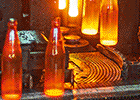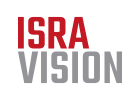Glaston Corporation and Softsolution, an Austria-based manufacturer of quality assurance systems for the glass industry, are collaborating to create even more outstanding quality inspection solutions for tempering lines.
The partnership aims to establish a new industry standard in glass quality. It combines the expertise of the world’s leading tempering machinery provider with the knowledge of an internationally renowned supplier of quality assurance systems. Together, the partners will develop new solutions to benefit high-quality glass processors.
Meeting the challenges of the glass market
Glaston has been a pioneer in the development of online quality measurement of tempered glass for a long time already. In parallel, the company has been focusing especially on the issue of anisotropy. Thus, Glaston’s iLooK Distortion was launched in 2010 and iLooK Anisotropy in 2017.
Now, this cooperation rises out of the continuously growing demand for quality glass assurance in the global processed glass market and also as a logical step for further iLooK development.
“Our extensive tempering process expertise is the basis for the current partnership. By joining forces, Glaston and Softsolution can take advantage of the strong measurement equipment know-how of both companies to develop more and more advanced quality measurement systems for tempered glass. This will allow us to bring to our glass processing customers more sophisticated solutions faster,” says Riku Färm, Product Manager for Glaston iLooK.
Glaston’s highly automated tempering lines require automated quality measurement at more and more positions across the line. Not only is an extremely reliable quality measurement system needed, it must also be able to detect an increasing number of defects.
Anisotropy measurement
The first joint project addresses anisotropy, a glass quality issue visible after the tempering process. To deal with this issue, Glaston will start utilizing Softsolution’s LineScanner anisotropy inspection technology as part of its iLooK quality measurement system.
“By using the anisotropy measurement competencies of both companies, the partnership will open up new opportunities to further develop these systems,” says Riku. This is especially important now that the industry has created a standard method called ASTM C1901-21 to measure optical anisotropy in architectural glass.
Results from joint technology
AGNORA, a Canadian fabricator of oversized architectural glass, is one company that already successfully uses LineScanner with Glaston’s technology to measure and control anisotropy in glass today.
Louis Moreau, Head of Technology and Innovation at AGNORA, was chair of the task group working on the ASTM C1901-21 standard development. He says: “Variables such as time of the year, humidity, glass thickness, tempering furnace performance and even operators can change the characteristics of heat-treated glass day to day.” Moreau adds that the invention and wider adoption of glass scanners capable of mapping retardation values have opened the door for more exacting measurements of the optical properties of tempered glass.
ASTM International, an international standards organization, adopted this standard earlier in 2021 with the purpose to provide a repeatable test method to measure anisotropy in architectural glass.

























